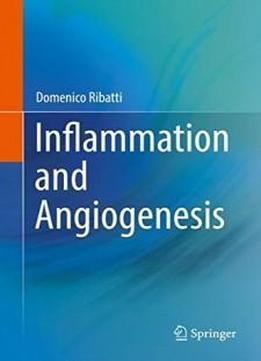
Inflammation And Angiogenesis
by Domenico Ribatti /
2017 / English / PDF
6.1 MB Download
This book is focused on the analysis of the role played by immune
cell components in the angiogenic process associated with
inflammation and tumor growth. Both innate and adaptive immune
cells are involved in the mechanisms of endothelial cell
proliferation, migration and activation, through the production and
release of a large spectrum of pro-angiogenic mediators. These may
create the specific microenvironment that favors an increased rate
of tissue vascularization. The link between chronic inflammation
and tumorigenesis was first proposed by Rudolf Virchow in 1863
after the observation that infiltrating leukocytes are a hallmark
of tumors and first established a causative connection between the
lymph reticular infiltrate at sites of chronic inflammation and the
development of cancer. Tumors were described as wounds that never
heal and surgeons have long described the tendency of tumors to
recur in healing resection margin and it has been reported that
wound healing environment provides an opportunistic matrix for
tumor growth. As angiogenesis is the result of a net balance
between the activities exerted by positive and negative regulators,
this book will also provide information on some anti-angiogenic
properties of immune cells that may be utilized for a potential
pharmacological use as anti-angiogenic agents in inflammation as
well as in cancer. The work is written for researchers in the field
and also for graduate students which approach this matter.
This book is focused on the analysis of the role played by immune
cell components in the angiogenic process associated with
inflammation and tumor growth. Both innate and adaptive immune
cells are involved in the mechanisms of endothelial cell
proliferation, migration and activation, through the production and
release of a large spectrum of pro-angiogenic mediators. These may
create the specific microenvironment that favors an increased rate
of tissue vascularization. The link between chronic inflammation
and tumorigenesis was first proposed by Rudolf Virchow in 1863
after the observation that infiltrating leukocytes are a hallmark
of tumors and first established a causative connection between the
lymph reticular infiltrate at sites of chronic inflammation and the
development of cancer. Tumors were described as wounds that never
heal and surgeons have long described the tendency of tumors to
recur in healing resection margin and it has been reported that
wound healing environment provides an opportunistic matrix for
tumor growth. As angiogenesis is the result of a net balance
between the activities exerted by positive and negative regulators,
this book will also provide information on some anti-angiogenic
properties of immune cells that may be utilized for a potential
pharmacological use as anti-angiogenic agents in inflammation as
well as in cancer. The work is written for researchers in the field
and also for graduate students which approach this matter.











